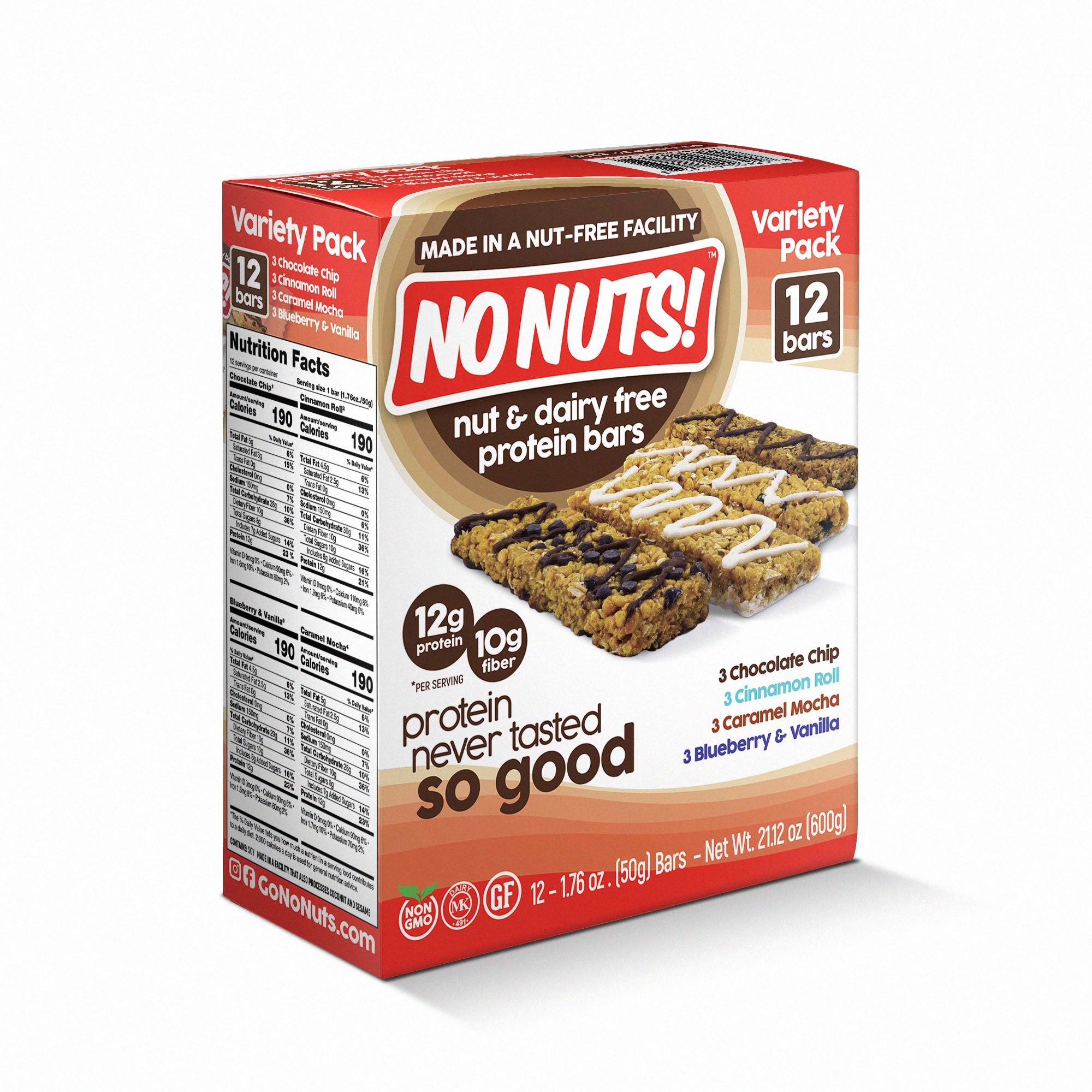10 consejos de limpieza sin alérgenos para un hogar más saludable
May 02, 2025
Tener un hogar más limpio y saludable no se trata solo de usar productos de limpieza naturales. También se trata de elegir los productos adecuados para llevar a casa, especialmente si usted o algún familiar tiene alergias. Veamos cómo limpiar sin alérgenos puede ayudar a tener un hogar más limpio y una vida más saludable. Siguiendo estos consejos, puede reducir significativamente los alérgenos en su hogar. Esto significa que el aire estará más limpio y habrá menos probabilidades de reacciones alérgicas para usted y su familia.
Puntos clave para una limpieza sin alérgenos
- Utilice productos de limpieza libres de alérgenos y fragancias.
- Aspiradoras con filtro HEPA
- Mantenga la humedad interior baja (por debajo del 50%)
- Lave la ropa de cama semanalmente con agua caliente.
- Utilice soluciones de limpieza naturales siempre que sea posible
- Mejora la ventilación en tu hogar
Ya que hoy hablamos de productos de limpieza, es bueno recordar que vivir sin alérgenos incluye todo en nuestros hogares, incluso los snacks que comemos. Descubre nuestros snacks sin frutos secos para complementar tu hogar sin alérgenos. Al tener snacks sin alérgenos, puedes reducir el riesgo de reacciones alérgicas y hacer que tu hogar sea más acogedor para familiares y amigos con alergias a los frutos secos.
1. Elija productos de limpieza sin alérgenos
Uno de los aspectos más importantes para tener un hogar libre de alérgenos es elegir productos de limpieza que no contengan alérgenos comunes. Muchos productos de limpieza comunes contienen sustancias químicas fuertes que pueden causar reacciones alérgicas. Estas sustancias pueden provocar estornudos, tos o erupciones cutáneas de inmediato, e incluso podrían causar problemas respiratorios con el tiempo. Al comprar productos de limpieza, busque etiquetas que indiquen "sin alérgenos" o "hipoalergénico". Además, busque productos aprobados por organizaciones que se preocupan por la salud y la seguridad.
Nuestro producto de limpieza No Nuts Blueberry Vanilla es un buen ejemplo de una opción sin alérgenos. Está elaborado sin alérgenos comunes y utiliza ingredientes naturales para una limpieza eficaz. Este producto es suave con la piel sensible, pero también es eficaz para limpiar la suciedad y la mugre de diversas superficies del hogar. Al usar productos de limpieza sin alérgenos como este, puede mantener su hogar limpio sin introducir elementos que puedan causar alergias.
2. Opte por productos sin fragancia
Las fragancias suelen causar alergias y pueden hacer que el aire de tu hogar sea menos saludable. Elige productos de limpieza sin fragancias para reducir el riesgo de reacciones alérgicas. Muchas personas son sensibles a las fragancias artificiales, que pueden causar dolores de cabeza, náuseas y problemas respiratorios. Incluso las fragancias naturales de aceites esenciales pueden ser perjudiciales para algunas personas. Al elegir productos de limpieza, busca etiquetas que indiquen claramente "sin fragancia" en lugar de solo "sin aroma", ya que "sin aroma" podría contener fragancias que disimulen otros olores. Al no usar fragancias en tus productos de limpieza, puedes mejorar mucho el aire de tu hogar y reducir el riesgo de reacciones alérgicas.
Nuestro paquete de muestra de limpieza sin alérgenos incluye diferentes opciones sin fragancia para ayudarte a encontrar los productos ideales para tu hogar. Este paquete de muestra te permite probar diferentes soluciones de limpieza sin alérgenos para ver cuáles funcionan mejor según tus necesidades y tus sensibilidades. Al probar diferentes opciones, puedes crear una rutina de limpieza que se adapte bien a tu hogar y reduzca el riesgo de reacciones alérgicas.
3. Utilice aspiradoras con filtro HEPA
Las aspiradoras con filtro HEPA (aire particulado de alta eficiencia) son excelentes para eliminar alérgenos de su hogar. Pueden atrapar partículas diminutas que las aspiradoras comunes podrían pasar por alto. Los filtros HEPA están diseñados para atrapar el 99.97% de partículas de hasta 0.3 micras, incluyendo ácaros del polvo, polen, caspa de mascotas y otros alérgenos comunes. Al usar una aspiradora HEPA, asegúrese de aspirar todas las superficies, incluyendo alfombras, muebles e incluso cortinas. Preste especial atención a las áreas de mucho tránsito y donde los alérgenos tienden a acumularse, como dormitorios y salas de estar. Aspirar regularmente con una aspiradora con filtro HEPA puede reducir significativamente la cantidad de alérgenos en su hogar, mejorando el aire y reduciendo los síntomas de la alergia.
4. Lave la ropa de cama con agua caliente semanalmente
Los ácaros del polvo, un alérgeno común, adoran vivir en la ropa de cama. Lavar las sábanas, fundas de almohada y mantas con agua caliente (al menos a 54 °C) cada semana puede ayudar a eliminar estos molestos alérgenos. Esta temperatura alta es necesaria para matar los ácaros del polvo y eliminar sus desechos, que son los principales causantes de las alergias. Además de lavarlas semanalmente, considere usar fundas para el colchón, las almohadas y los edredones que eviten la entrada de alérgenos. Estas fundas crean una barrera que impide que los ácaros del polvo vivan en la ropa de cama. Si tiene alergias graves, conviene lavar la ropa de cama con más frecuencia, especialmente cuando las alergias empeoran en ciertas estaciones.
5. Mantenga niveles bajos de humedad
Mantener la humedad en su hogar por debajo del 50% puede ayudar a prevenir la proliferación de moho y ácaros del polvo. Estos son dos alérgenos comunes. La humedad alta crea un ambiente propicio para la proliferación de estos alérgenos. Use un higrómetro para verificar los niveles de humedad en su hogar y considere usar un deshumidificador en áreas húmedas como sótanos o baños. Además de controlar la humedad, repare rápidamente cualquier fuga de agua o problema de humedad para prevenir la proliferación de moho. Una buena ventilación, especialmente en baños y cocinas, también puede ayudar a reducir los niveles de humedad. Cuando hay humedad afuera, usar el aire acondicionado puede ayudar a eliminar el exceso de humedad del aire, lo que dificulta la proliferación de alérgenos en su hogar.
6. Utilice soluciones de limpieza naturales
Productos sencillos y naturales como el vinagre, el bicarbonato de sodio y el jugo de limón pueden limpiar bien sin causar reacciones alérgicas. Estos limpiadores naturales son eficaces para eliminar la suciedad y la mugre, además de ser buenos para el medio ambiente y económicos. Por ejemplo, puedes mezclar partes iguales de agua y vinagre blanco para preparar un limpiador eficaz en la mayoría de las superficies. El bicarbonato de sodio es excelente para restregar y eliminar olores, mientras que el jugo de limón puede desinfectar y eliminar manchas. Cuando uses soluciones de limpieza naturales, pruébalas siempre primero en una zona pequeña y oculta para asegurarte de que no dañen lo que estás limpiando.
Aunque nuestro Moca Caramelo Sin Nueces no es una solución de limpieza, sus ingredientes naturales demuestran nuestra preocupación por elaborar productos sin alérgenos. Este compromiso con el uso de ingredientes naturales y sin alérgenos en nuestros alimentos demuestra nuestra preocupación por la salud de las personas mediante la selección cuidadosa de los ingredientes.
7. Mejorar la ventilación
Una buena ventilación puede ayudar a reducir los alérgenos en interiores. Abra las ventanas cuando haga buen tiempo, use extractores de aire y considere comprar un purificador de aire con filtro HEPA. Una buena ventilación ayuda a eliminar el aire viciado, que puede contener muchos alérgenos, y permite la entrada de aire fresco. Al abrir las ventanas, tenga cuidado con los niveles de alérgenos en el exterior, especialmente cuando haya mucho polen. En esos casos, podría ser mejor usar un purificador de aire o el sistema de calefacción y aire acondicionado de su casa con un buen filtro. En zonas que se humedecen con facilidad, como baños y cocinas, asegúrese de usar extractores de aire regularmente para eliminar la humedad adicional y evitar la formación de moho. También, considere usar ventiladores de techo para una mejor circulación del aire en su casa.
8. Limpie o reemplace los filtros de aire regularmente
Los filtros de aire de su sistema de calefacción y refrigeración pueden atrapar alérgenos, pero necesitan un mantenimiento regular para que funcionen correctamente. Límpielos o reemplácelos con la frecuencia recomendada por el fabricante. La mayoría de los filtros deben reemplazarse cada 1 a 3 meses, dependiendo de factores como el tipo de filtro, si tiene mascotas y qué tan limpio esté el aire de su hogar. Al reemplazar los filtros, elija filtros de alta calidad con una clasificación MERV (Valor Mínimo de Informe de Eficiencia) más alta, lo que significa que filtran mejor las partículas pequeñas. Además de los filtros de su sistema de calefacción y refrigeración, no olvide limpiar o reemplazar los filtros de otros aparatos como purificadores de aire, aspiradoras y extractores de aire. El mantenimiento regular de estos filtros garantiza que sigan eliminando los alérgenos del aire de su hogar.
9. Utilice paños de microfibra para quitar el polvo
Los paños de microfibra son excelentes para atrapar el polvo y los alérgenos sin dispersarlos. Funcionan mejor que los plumeros o los paños secos. Las diminutas fibras de los paños de microfibra crean una carga estática que atrae y retiene las partículas de polvo, en lugar de simplemente dispersarlas. Al limpiar el polvo, comience desde la parte superior de la habitación y vaya hacia abajo, dejando que el polvo se asiente antes de limpiar las superficies inferiores. Después de limpiar, lave los paños de microfibra con agua caliente para eliminar los alérgenos atrapados. Para obtener mejores resultados, use diferentes paños de microfibra para cada área de su hogar para evitar la propagación de alérgenos.
10. Ordena con regularidad
Cuanto menos cosas tengas, menos lugares habrá para que los alérgenos se escondan. Deshazte del desorden con regularidad puede hacer que tu limpieza sea más efectiva. El desorden no solo acumula polvo, sino que también puede dificultar una limpieza a fondo. Empieza por revisar tus cosas y donar o tirar los artículos que ya no necesitas o usas. Presta especial atención a las zonas que tienden a acumularse, como armarios, estanterías y mesas. Al organizar, usa soluciones de almacenamiento cerradas, como contenedores con tapa, para minimizar la acumulación de polvo. Además, considera la regla de "uno entra, uno sale" para evitar el desorden en el futuro. Al mantener tu casa ordenada, te resultará más fácil limpiar eficazmente y reducir la cantidad de superficies donde se pueden acumular alérgenos.
Nuestro paquete de muestra de 4 sin frutos secos es una excelente manera de probar diferentes productos sin alérgenos sin abarrotar tu espacio. Este paquete te permite probar una variedad de nuestros snacks sin alérgenos mientras mantienes tu despensa organizada. Al elegir productos cuidadosamente seleccionados como este, puedes disfrutar de diferentes sabores sin tener demasiados envases ni artículos sin usar que arruinen tu despensa.
CONSEJOS ADICIONALES:
11. Use fundas a prueba de alérgenos para la ropa de cama
Las fundas especiales para colchones, almohadas y edredones pueden crear una barrera contra los ácaros del polvo y otros alérgenos. Estas fundas suelen estar hechas de telas de tejido apretado que impiden el paso de los alérgenos, pero permiten la circulación del aire. Al elegir fundas a prueba de alérgenos, busque las que sean transpirables y cómodas, ya que dormirá sobre ellas todas las noches. Es importante recordar que, aunque estas fundas funcionan bien, debe usarlas junto con el lavado regular de la ropa de cama. Incluso con fundas, debe lavar las sábanas y fundas de almohada semanalmente con agua caliente. Para una mejor protección, considere cambiar las almohadas cada 1 o 2 años y los colchones cada 7 a 10 años, ya que estos artículos pueden acumular alérgenos con el tiempo, incluso con fundas protectoras.
12. Educar a los familiares y a los invitados
Asegúrese de que todos en su casa comprendan la importancia de mantener un ambiente libre de alérgenos. Esto incluye saber cómo limpiar correctamente y tener cuidado con los productos que se traen al hogar. Organice reuniones familiares para hablar sobre las prácticas libres de alérgenos y elabore un programa de limpieza en el que todos puedan colaborar. Para los invitados, considere crear una breve guía o lista de verificación de prácticas libres de alérgenos que puedan seguir cuando vengan de visita. Esto podría incluir quitarse los zapatos al entrar, usar los artículos de aseo libres de alérgenos que les proporcione y tener cuidado al traer alimentos o productos del exterior que puedan contener alérgenos. Al enseñar a todos los que entran a su hogar, puede mantener un ambiente libre de alérgenos de forma constante y reducir el riesgo de traer nuevos alérgenos.
Para más información sobre el manejo de alergias, especialmente en niños, consulte nuestra entrada de blog sobre cómo abordar las alergias alimentarias infantiles . Este recurso ofrece información valiosa para crear un entorno consciente de los alérgenos, especialmente en las escuelas. Al comprender cómo manejar las alergias alimentarias eficazmente, puede aplicar ideas similares a las rutinas de limpieza y mantenimiento de su hogar, garantizando un entorno seguro y saludable para todos los miembros de la familia e invitados.
En resumen:
Crear un ambiente doméstico libre de alérgenos es algo en lo que debe trabajar constantemente. Implica elegir cuidadosamente los productos, limpiar con regularidad y ser consciente de sus hábitos. Siguiendo estos consejos y eligiendo productos libres de alérgenos, puede reducir significativamente los alérgenos en su hogar y crear un lugar más saludable para usted y su familia. Recuerde que la constancia es clave para mantener un ambiente libre de alérgenos. La limpieza regular, junto con el uso de productos a prueba de alérgenos y la atención a sus hábitos, puede marcar una gran diferencia en la reducción de los síntomas de las alergias y la mejora general de la calidad de vida de las personas con alergias.
Recuerda, una vida sin alérgenos va más allá de usar productos de limpieza. Piensa en todos los aspectos de tu hogar, incluyendo los refrigerios que eliges. Descubre nuestra gama completa de refrigerios sin frutos secos que se adaptan a tu estilo de vida sin alérgenos. Al incluir refrigerios sin alérgenos en tu rutina diaria, no solo estás abordando posibles alergias alimentarias, sino que también demuestras tu compromiso con un hogar consciente de los alérgenos. Este enfoque integral para el manejo de alérgenos puede ayudar a crear un ambiente más seguro y cómodo para todos en tu hogar, tengan o no alergias conocidas.














